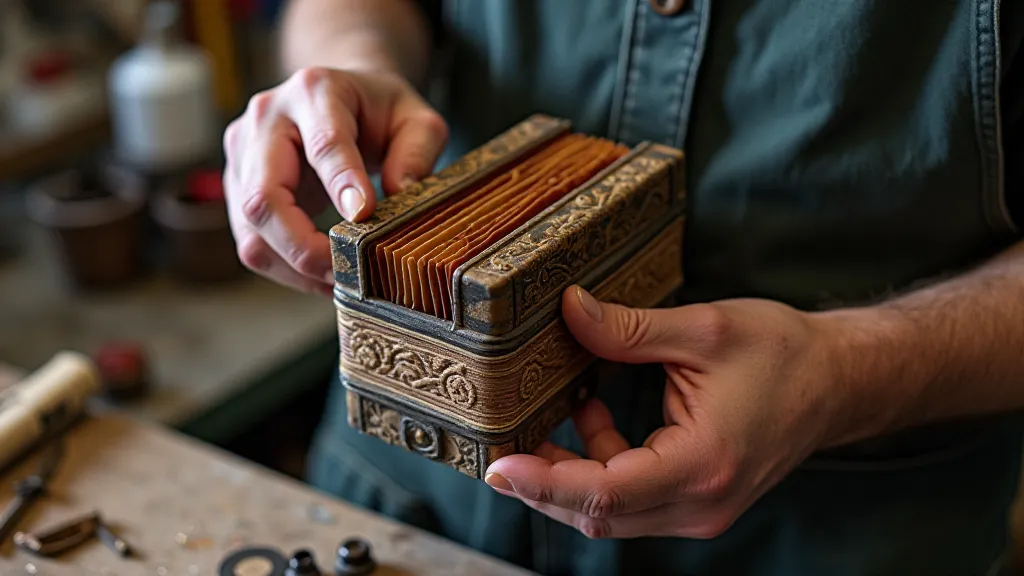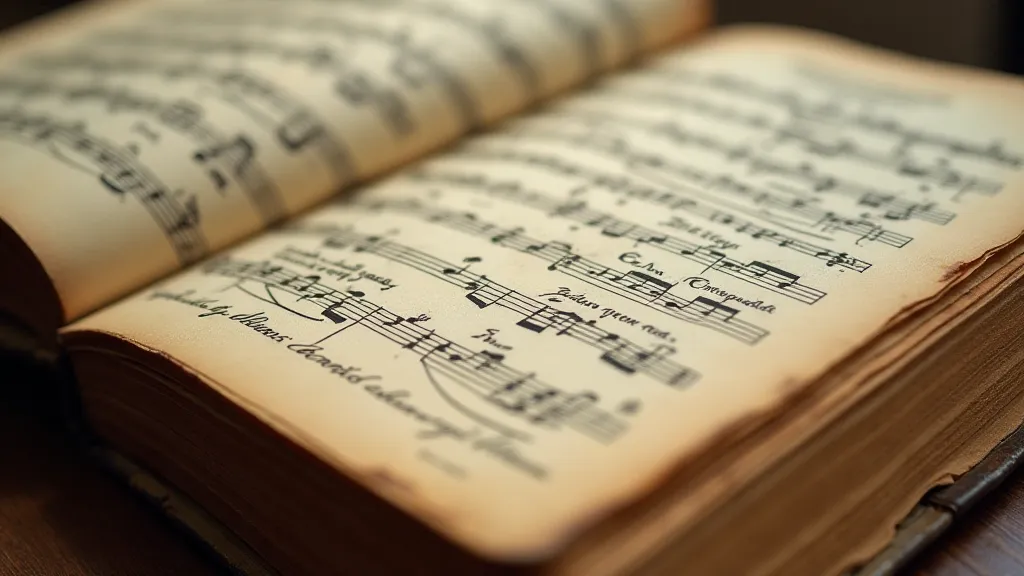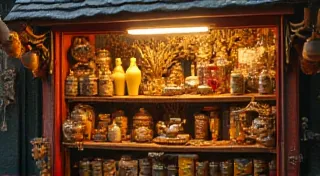The Loom of Language: Weaving Together Regional Dialects and Narrative Identity
There’s a certain melancholy that clings to antique accordions. Not a sadness of loss, necessarily, but a quiet reverence for the lives they’ve lived, the stories they’ve carried, and the voices they’ve amplified. Their bellows, once bursting with the laughter and longing of a community, now whisper tales of a fading world, a world where language wasn't just communication; it was a tapestry woven with history, identity, and belonging. This resonance echoes powerfully when we consider regional dialects, those distinctive variations of language that paint a picture of a place and its people with a vibrancy no standardized form can match.

The Architecture of Accent: More Than Just Words
Linguists define a dialect as a variety of a language characterized by unique vocabulary, grammar, and pronunciation. But a dialect is far more than just a collection of quirky words. It’s a living testament to migration patterns, historical events, and the constant evolution of human interaction. Think of the Appalachian dialect, shaped by the isolation of mountain communities, the influence of Scots-Irish settlers, and centuries of oral tradition. Or consider the Gullah language spoken in the coastal regions of South Carolina and Georgia, a Creole language blending West African and English influences – a direct result of the transatlantic slave trade and a powerful symbol of cultural resilience.
My grandfather, a man of few words but immeasurable warmth, was born and raised in rural West Virginia. He spoke with a cadence and vocabulary so distinctly Appalachian that I often struggled to understand him when I first moved away. It wasn't a matter of him not speaking "proper" English; it was that his language was a living embodiment of his place, his heritage, and his identity. He used words like “holler” (a small valley), “reckon” (to think or suppose), and “afeared” (afraid), not as affected quirks, but as integral parts of his everyday communication. Those words, and the way he strung them together, painted a vivid picture of the mountains, the hard work, and the strong sense of community that defined his life. Attempting to replicate that perfectly in writing is incredibly difficult, but understanding its essence is vital for authentic portrayal. The complex interplay of these factors—isolation, settlement patterns, and cultural exchange—demonstrates how deeply intertwined language is with geography and history. Indeed, understanding how populations move and adapt is critical to understanding the evolution of language, a concept explored further in “Borrowed Light: The Influence of Migration on Regional Speech Patterns.”
Dialect and Narrative Authenticity: Breathing Life into Characters
For a writer, dialect isn't just a linguistic curiosity; it’s a powerful tool for character development. It’s the key to unlocking authenticity and crafting characters that resonate with readers long after the story ends. A flat, standardized narrative voice risks feeling generic and lifeless. But a character who speaks with a recognizable regional dialect immediately gains depth and complexity. It’s a shortcut to conveying background, social class, and emotional state.
Think of Harper Lee’s Scout Finch in *To Kill a Mockingbird*. Scout’s Southern dialect, while subtly rendered, is essential to understanding her innocence, her perspective, and her connection to her community. It’s what grounds her experiences in the specific cultural landscape of the American South. Similarly, in Cormac McCarthy's *Blood Meridian*, the language of the characters, often a blend of archaic terms and idiosyncratic phrasing, creates a sense of brutal reality and historical distance. The *way* they speak is as important as *what* they say.
However, using dialect in writing requires immense care and sensitivity. Overdoing it can lead to caricature and mockery. A writer must be a careful observer, a keen listener, and a respectful interpreter of the language they are portraying. It’s not enough to simply sprinkle in a few “colorful” phrases; a writer must understand the underlying grammatical structure, the nuances of pronunciation, and the cultural context that shapes the dialect. The power of language isn’t just in the words themselves, but in the subtle traces it leaves behind - the linguistic fossils that reveal a community’s past. “The Ghosts of Words: Lexical Remnants and the Lingering Memory of Old Ways” delves deeper into these fascinating vestiges of lost tongues.
The Craftsman’s Hand: Accordions and the Preservation of Linguistic Heritage
Just as the craftsmanship of an antique accordion reflects the skill and artistry of a bygone era, the preservation of regional dialects requires a similar dedication. Many dialects are facing extinction, eroded by the forces of globalization, mass media, and standardized education. The younger generation often adopts more mainstream forms of language, leaving behind the rich linguistic heritage of their ancestors.

Restoring an antique accordion is a delicate process. It requires not only technical expertise but also a deep appreciation for the instrument's history and the artistry that went into its creation. A skilled restorer understands that they are not simply repairing a machine; they are preserving a piece of cultural memory. Similarly, efforts to document and revitalize regional dialects – through oral history projects, language classes, and community initiatives – are essential for preserving linguistic diversity.
Consider the resurgence of interest in Appalachian music and storytelling. This renewed appreciation for the region's culture has also led to a greater awareness of its unique dialect. Local organizations are working to create online dictionaries, record interviews with elder speakers, and promote the use of Appalachian English in schools and communities. The landscape itself shapes language; the ways people cultivate the land, what they grow, and how they interact with their environment leave an indelible mark on the words they use. This fascinating connection between agriculture and language is examined in “From Field to Table: How Agricultural Practices Mold Regional Vernacular.”
The Echoing Voice: A Legacy of Language and Story
The connection between language, storytelling, and identity is profound. Regional dialects are not merely variations in pronunciation or vocabulary; they are living embodiments of cultural history, community values, and individual experiences. As writers, we have a responsibility to portray these dialects with accuracy, sensitivity, and respect, recognizing that they are essential components of a character’s authenticity and voice.
And as citizens, we have a responsibility to preserve the richness and diversity of our linguistic heritage, recognizing that each dialect represents a unique window into the human experience. Just as the melancholic whisper of an antique accordion evokes the echoes of a fading world, the preservation of regional dialects ensures that the voices of the past continue to resonate in the present, enriching our understanding of who we are and where we come from. The loom of language continues to weave its intricate patterns, and it is our duty to ensure that those patterns are not lost to the sands of time.

The enduring power of language lies not only in its ability to convey meaning but also in its capacity to bind communities together, transmitting cultural knowledge and shared experiences across generations. When a dialect fades, it’s more than just words that are lost—it’s a piece of a community’s soul, a tangible link to its ancestors and its history. The preservation of these voices is a collective responsibility, requiring ongoing effort and a deep appreciation for the invaluable role language plays in shaping our identities and understanding our place in the world. The subtle nuances of language, the unspoken assumptions embedded in everyday conversations, can reveal much about a community’s values, beliefs, and social structures. This intricate tapestry of meaning is what makes regional dialects so captivating and so vital to preserving cultural heritage.
Consider the role of oral tradition in maintaining dialectal variation. In communities where storytelling and folk music thrive, dialects often remain vibrant, passed down through generations in songs, rhymes, and narratives. These oral traditions serve as a powerful antidote to the homogenizing forces of mass media and standardized education, ensuring that unique linguistic features persist and are celebrated. The study of language is not just about grammar and vocabulary; it’s about understanding the human experience, the complexities of communication, and the profound connection between language, culture, and identity. It’s about recognizing that every dialect represents a unique perspective, a valuable contribution to the rich and diverse linguistic landscape of our world.
Ultimately, the preservation of regional dialects is an act of resistance, a refusal to surrender to the forces of globalization and standardization. It's an affirmation of cultural identity, a celebration of linguistic diversity, and a commitment to safeguarding the invaluable heritage of our ancestors. By listening to the voices of the past, by documenting the stories of our communities, and by promoting the use of regional dialects in schools and public spaces, we can ensure that these voices continue to resonate in the present, enriching our understanding of who we are and where we come from. The antique accordion, with its weathered keys and faded bellows, serves as a potent symbol of this ongoing effort, reminding us of the importance of preserving not only the instruments themselves but also the music, the stories, and the voices that they represent.





